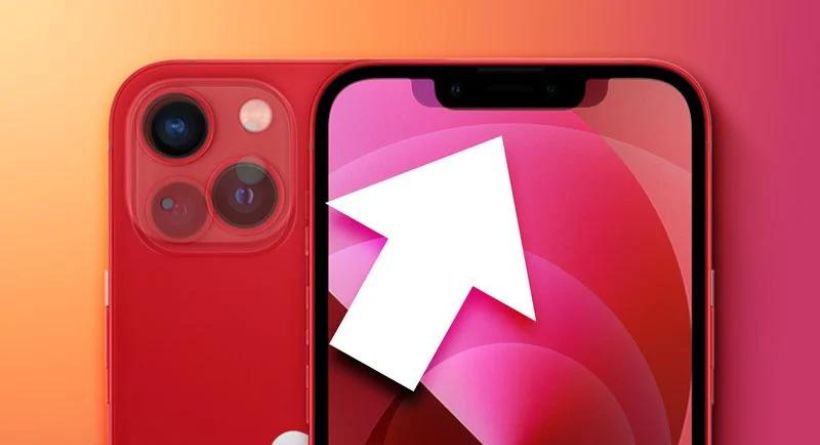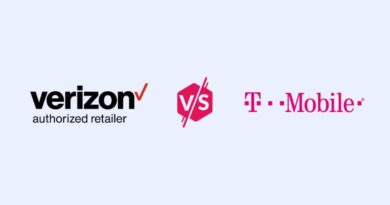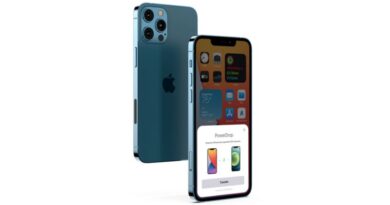IPhone 12 vs. iPhone 13 Buyer’s Guide
Apple revealed the iPhone 13 in 2021 as the popular iPhone 12’s replacement, with enhanced back cameras, increased battery life, the A15 Bionic CPU, and other features. Consumers would probably choose the iPhone 13 over other versions since it is less expensive as the Pro models but more feature-rich than the inexpensive iPhone SE or iPhone 11.
Apple still offers the 2020 iPhone 12 for sale. It begins at $699, whereas the iPhone 13 starts at $799, despite being a year older than the most current iPhones. Should you think about getting the iPhone 12 to save money since it includes many features that the iPhone 13 does not? Although the iPhone 13 is just a little improvement over the iPhone 12, our guide may help you determine which of these two iPhones is best for you.
Comparing the iPhone 12 and the iPhone 13
Numerous essential elements, like display size, 5G connection, and camera specs, are shared by the iPhone 12 and iPhone 13. The identical characteristics of the iPhone 12 and iPhone 13 are listed by Apple:
Similarities
- Haptic Touch Face ID, HDR, True Tone, P3 broad colour, and 6GHz 5G connection are all features of the 6.1-inch OLED Super Retina XDR display (and mmWave in the U.S.)
- A-Series Bionic chip with six cores
- 4 GB of storage
- Dual 12MP cameras with f/2.4 and f/1.6 wide-angle lenses and two-times optical zoom out
- Night mode, Deep Fusion, True Tone flash with Slow Sync, Portrait mode, and other photography features
- Features for shooting videos include 4K video at up to 60 frames per second, HDR video with Dolby Vision, Audio Zoom, slo-mo video up to 240 frames per second at 1080p, Night mode Time-lapse, and more.
- Splash, water, and dust resistance certified IP68 Ceramic Shield front
- Aircraft-grade aluminium with Qi wireless charging and MagSafe
- Thunderbolt connection
- Available with storage choices of 128GB and 256GB
- In stock in (PRODUCT) RED
According to Apple’s analysis, the iPhones have a number of noteworthy important traits in common. The battery life and CPUs of the iPhone 12 and iPhone 13 are only two examples of the significant variations between the two models.
Differences
IPhone 12
- Super Retina XDR display with a maximum brightness of 625 nits (typical)
- Bionic chip A14
- Twin SIM (nano-SIM and eSIM)
- For photographs, use Smart HDR 3.
- Recording Dolby Vision HDR video at a frame rate of up to 4K
- Battery life of up to 17 hours when playing videos
- Is 164 grammes heavy?
- Available in PRODUCT (RED), White, Black, Purple, Blue, and
- Includes storage choices of 64GB, 128GB, and 256GB.
IPhone 13
- Super Retina XDR display with a maximum brightness of 800 nits (typical)
- A15 Bionic chip has a 20% smaller notch.
- Support for dual eSIM and twin nano-SIM SIM cards
- For photographs, use Smart HDR 4.
- Photography Techniques
- Up to 4K at 60 fps Dolby Vision HDR video recording
- Theatrical mode capturing video with a limited depth of field (1080p at 30 fps)
- Battery life of up to 19 hours when playing videos
- Contains 174 grammes.
- Available in PRODUCT, Starlight, Midnight, Blue, Pink, and Green (RED)
- Available with storage choices of 128GB, 256GB, and 512GB
Colors and design
The industrial design of the iPhone 12 and iPhone 13 is the identical, with squared-off corners and a flat metal band around the sides. The gadgets have a single piece of polished glass on the back and edges made of aerospace-grade metal. The twin rear cameras of the iPhone 13 are positioned diagonally opposite one another as opposed to vertically on the iPhone 12.

For the TrueDepth camera array, the iPhone 13 has a 20% smaller notch, which frees up more screen real estate and makes the cutout less noticeable. The positions of the back cameras and the narrower notch are the only visual differences between the two smartphones.
While the iPhone 13 is available in Starlight, Midnight, Blue, Pink, and Green, the iPhone 12 is only available in Purple, Blue, Green, White, and Black. Both may be found in PRODUCT (RED). White and Starlight, Black and Midnight, as well as the two colours of Blue, are comparable. The choice between the iPhone 12 and the iPhone 13 will depend on personal preference since both handsets have a similar appearance.
Display
A 6.1-inch OLED Super Retina XDR display with HDR, True Tone, P3 broad colour, and Haptic Touch is included on both the iPhone 12 and the iPhone 13. The display of the iPhone 13 is just 175 nits brighter than the iPhone 12 when used normally without HDR, but this is hardly a compelling reason to upgrade.
A14 vs. A15
The A15 Bionic processor in the iPhone 13 offers a little performance boost over the A14 Bionic in the iPhone 12. According to tests, the A15 in the iPhone 13 performs around 10% better on single-core tasks and 18% better on multi-core tasks than the A14 in the iPhone 12. The iPhone 13 outperforms the A14 Bionic in the iPhone 12 in graphics workloads by around 15%.

These incremental performance improvements with the A15 are more of a justification to upgrade than a compelling one. The two devices are expected to function similarly in day-to-day usage since the A14 is still a very powerful processor.
Dual SIM
The iPhone 13 can handle two eSIMs at once, while both smartphones offer dual SIM, with one conventional nano-SIM and an eSIM. You’ll need the iPhone 13 if you need to swap between two eSIMs in order to take use of this feature.
Cameras
Dual 12MP rear cameras with an f/2.4 Ultra-Wide and an f/1.6 Wide camera are included on the iPhone 12 and iPhone 13. The Wide camera on the iPhone 13 has a bigger sensor that can collect 47% more light for less noise and brighter shots, while the Ultra-Wide camera has a new sensor that can capture more detail. For smoother video and better picture quality, the Wide camera also has sensor-shift optical image stabilization.
The iPhone 13 is able to capture Dolby Vision HDR video up to 60 frames per second, compared to the iPhone 12’s 30 frames per second.

Cinematic mode, a brand-new camera function on the iPhone 13, enables users to capture videos with a narrow depth of focus at 1080p and 30 frames per second. When recording video, the emphasis may be smoothly switched from one topic to another using the cinematic mode. The backdrop is blurred while the topic is kept in focus, and the focus may be changed automatically as soon as a new subject enters the frame. After video has been captured, blur and focus may also be changed using the Photos app.

Photographic Styles, which are clever, programmable filters that can do things like amplify or mute colours without changing skin tone, are also supported by the iPhone 13. In contrast to filters, which are applied uniformly to a picture, styles are applied selectively. Vibrant (boosts colours), Rich Contrast (darker shadows and deeper hues), Warm (accentuates golden undertones), or Cool are some examples of photographic styles (accentuates blue undertones). You can achieve the precise appearance you desire since Tone and Warmth may be adjusted for each style.
While the cameras on the iPhone 12 and iPhone 13 have comparable features, the iPhone 13 has additional features such Cinematic mode, Photographic Styles, Dolby Vision HDR video at a faster frame rate, and bigger sensor and sensor-shift stabilisation. Although the iPhone 12’s camera is still quite good, the iPhone 13 offers additional photography and filmmaking choices as well as greater picture quality.
A battery’s life
The battery life of the iPhone 12 and iPhone 13 differs significantly in several areas. Up to two hours longer than the iPhone 12’s 17 hours of video playback, the iPhone 13 offers up to 19 hours of battery life. The iPhone 13 has a battery life of 15 hours while streaming video as opposed to the iPhone 12’s 11 hours. Additionally, the iPhone 13 can stream music for 10 more hours than the iPhone 12. The iPhone 13 is, therefore, unquestionably superior than the iPhone 12 for consumers who need the greatest amount of battery life from their iPhone.
Storage
While the iPhone 13 has storage choices of 128 GB, 256 GB, and 512 GB, the iPhone 12 has storage options of 64 GB, 128 GB, and 256 GB. This implies that if you want more storage than 256GB, you must purchase the iPhone 13 in order to have access to a greater 512GB storage capacity. In all other respects, the devices’ storage capacities are identical.
Additional iPhone Option
It is important to remember that the $699 iPhone 13 mini has the same feature set as the iPhone 13, but with a smaller form factor, a 5.4-inch display, and a little reduced 17-hour battery life (during video playback). Similar to the iPhone 12, the iPhone 12 mini has the same features for $599 but is smaller, has a 5.4-inch display, and has a longer battery life (during video playback).
The iPhone 13 Pro, which begins at $999, has a ProMotion display with a refresh rate up to 120Hz, more RAM and a more powerful engine for graphics, a more upscale design, even longer battery life, and a more competent rear camera arrangement. The most feature-rich and powerful iPhone experience is provided by the iPhone 13 Pro, which costs $200 more than the iPhone 13 model.

Final Reflections
The improvements made to the iPhone 13 over the iPhone 12 are primarily incremental and include improvements to the display brightness, the size of the notch, speed enhancements, and new camera software functions. Even while the camera hardware and battery life have undergone more substantial improvements, most users are probably not going to find enough of a difference to choose the new model over the iPhone 12 at first glance.
However, as these choices are available with both models, when simply considering the 128GB and 256GB storage options, the prices for the iPhone 13 and iPhone 12 are $799 and $899, respectively. If you require more capacity than 64GB, there is just a $50 pricing difference between the iPhone 12 and the iPhone 13, on a like-for-like basis. The iPhone 13 should be purchased if you want more capacity than 64GB, even if the enhancements are primarily incremental and not compelling enough to warrant the extra $50.
If 64GB of storage suffices for you, you’ll need to decide if the iPhone 13’s variety of upgrades and more storage are worthwhile for the extra $100. The iPhone 12 shares the vast majority of the most useful features of the iPhone 13, including 5G connectivity, Night mode, MagSafe, and IP68 water resistance, which may make the extra $100 for the iPhone 13 difficult to justify. The device still has a 17-hour battery life, dual cameras, and an A14 Bionic chip, making it more than capable for daily use.




